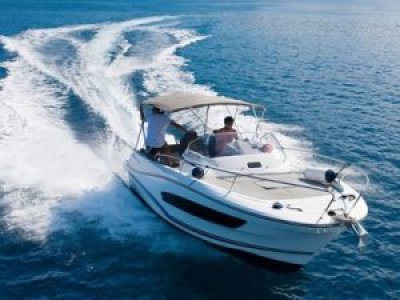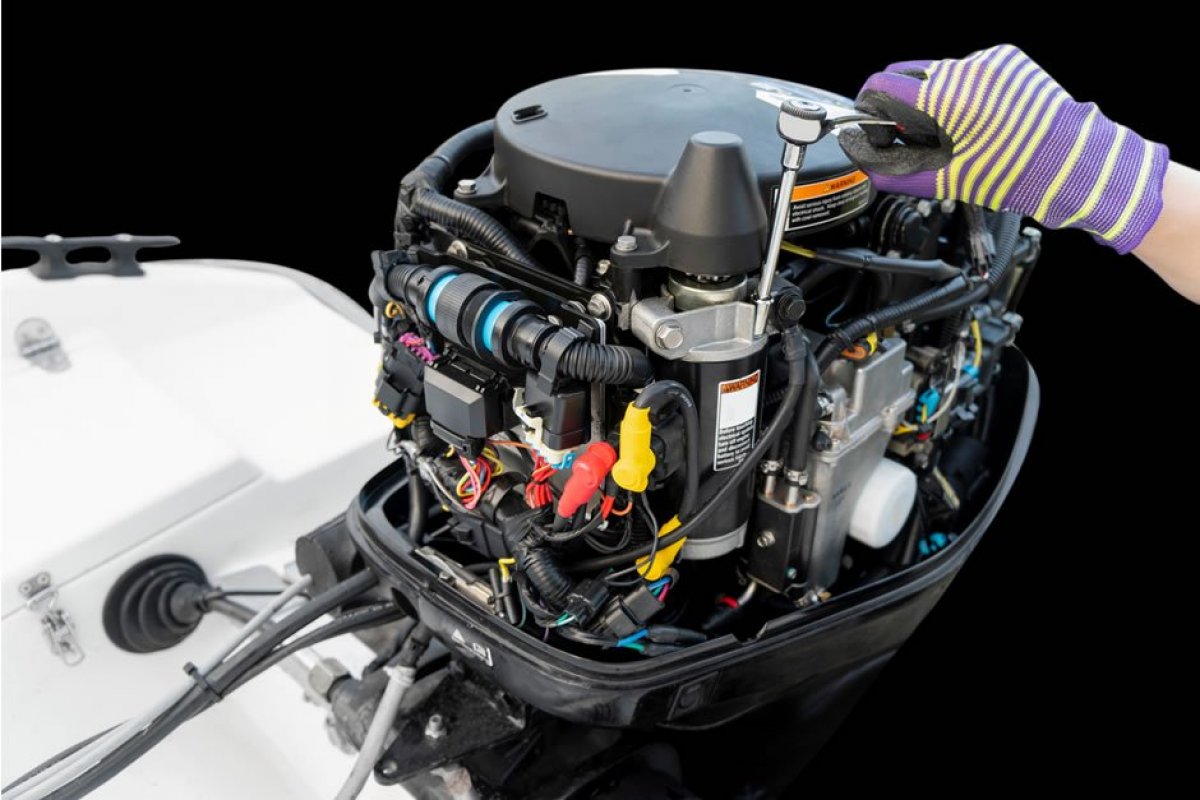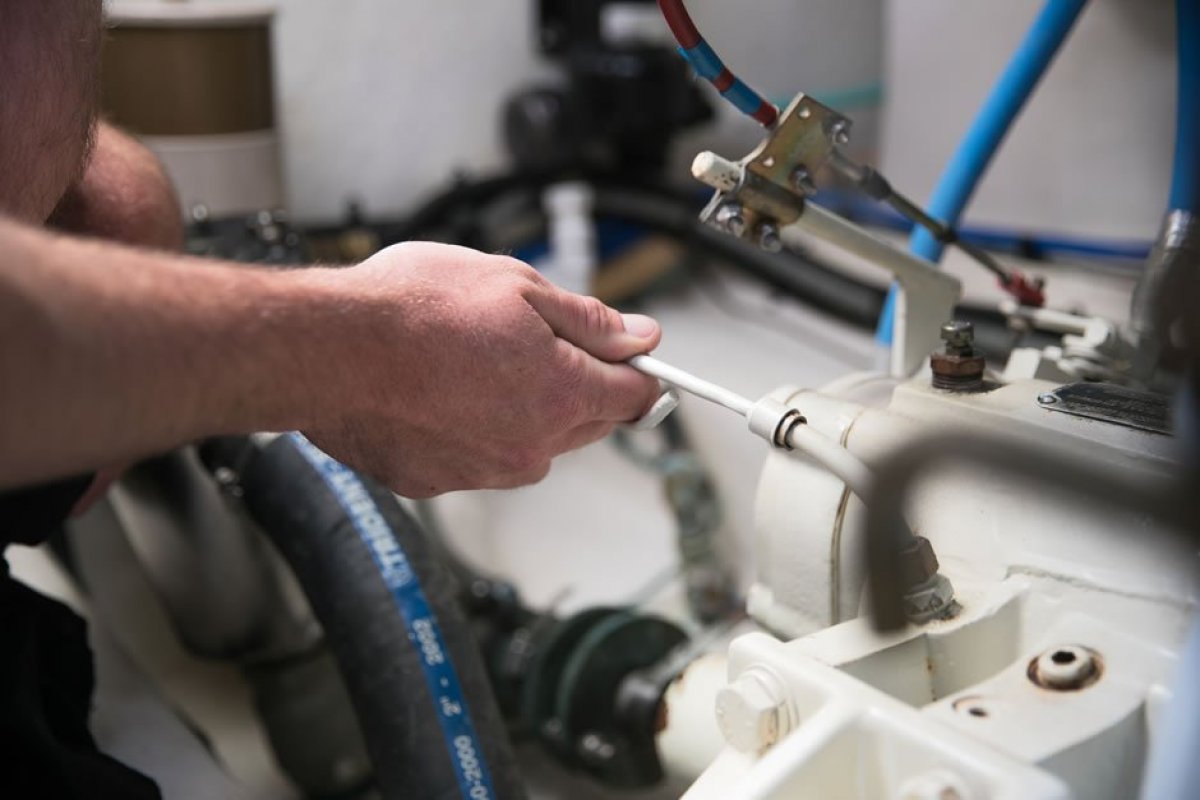How Much Does It Cost To Maintain A Used Boat?

It’s important to look below the surface when getting your boat inspected; when calculating the costs, it’s no different. Far beyond just the cost of the annual service, any budding boat buyer should consider the initial condition of the boat, alongside how it’s stored and its age. Are you wondering whether or not your boat will age like fine wine? This article is for you!
Is the vessel moored, or does it live on a trailer?
Although each storage solution has its own pros and cons, an important consideration is the cost. If you are storing your boat on the water, you will need to consider a yearly antifoul cost which includes the cost for a marina or slipway to haul the boat out each year for you to complete your maintenance.
If instead, you store your boat on a trailer, you will need to consider the cost of maintaining trailer lights, wheel bearings, suspension and braking systems.
How old is the vessel?
Age is a major factor when considering both the reliability and cost of the boat. Inevitably, items will deteriorate, some sooner than others. Any boat over 10 years old will likely have some major maintenance items and this will be something to consider when calculating your costs. Moreover, as we’ll see later in our case studies below, environmental conditions may wear certain elements down sooner.
You still haven’t told me a price!
Don’t worry, we’re nearly there! I know I’ve been speaking in abstracts, but we’ll tackle (fishing joke!) both some big and little fish, uh, I mean boats, with some case studies below.

CASE STUDIES
1. 3 year old 6 metre trailer boat, fitted with an outboard
Assume you’re talking about a late model Haines, Quintrex or similar Australian built boat.
Let’s say you're calculating the cost for a 2018 Haines Hunter 565 with a Mercury 150HP Four Stroke. Only being 3 years old, the maintenance cost should be similar whether the boat is a fibreglass or alloy composition.
At this age, I would budget for the following:
- Inspection and replacement of the wheel bearings on the trailer - $400-$800
- Annual engine service, as per manufacturer's recommendations: $800-$1200
- Cleaning and polishing - in this size most people do it themselves. But a good detail on a trailerboat will easily set you back $1000.
As the boat should still present reasonably new, it’s unlikely there will be any extra repairs short of upgrades you wish to perform. Additionally, as the boat lives on a trailer there is no additional cost for mooring or antifouling. Lastly, if you were considering reselling the boat, its cost will depreciate at a consistent rate over the next 2 - 6 years before settling to a flatter curve.
2. For comparison’s sake, let’s now take that exact same boat, and put it on a mooring or in a berth - how does it affect the yearly cost?
Now you’d want to allow for:
- Annual engine service, as per the manufacturers recommendations: $800-$1200
- Annual antifouling (including haul out, hard stand etc) $1500-$3000
- Annual anode replacement $200-300
- Annual polishing/cleaning $600-$1000 (You may want a more frequent cleaning regime, like monthly - and this will come at additional cost)
- Berthing costs ($500-1500 per month) or mooring cost ($1500-2000 per year for a public mooring).
As alluded to earlier, the adverse conditions of the mooring and salt-water environment will also have accelerated wear to the general cosmetic condition of the boat. This includes any upholstery, gelcoat and painted surfaces. Often a requirement from the insurer will be to install a quality storm cover, to cover up the interior of the boat and avoid rain accumulating into the boat.
Okay, so what about something a bit bigger?
Sure, we all dream for a bigger boat. But what we don’t dream about is the maintenance nightmares that can come with it. In this example, let’s use a 15 year old 30ft-35ft boat. Because the boat is 30ft+, you’re definitely going to be paying for mooring or berthing at a marina. We will give two examples, one sterndrive, and one shaft.
3. 30ft-35ft Twin Engine, Petrol, Sterndrive 15 years old
Some popular examples from the 2000s era: Sea Ray 310, Sunrunner 3300, Riviera M290 etc.
- Annual engine servicing, as per manufacturer recommendations: $2500-$3000 for two engines
- Annual sterndrive servicing, including removal and cleaning water passages: $1500-$2500
- Annual antifouling, including anodes $2000-$3500
- Annual mooring or berthing fees:
- Berthing: Anywhere from $800-2000 per month
- Mooring: Anywhere from $2000-$3000 per year for a public mooring, to $400-800 a month for a serviced mooring at a marina with a tender service
- Annual polishing of hull $1000-$2500
- Additional major maintenance items, such as transom assemblies, sterndrives, exhaust manifolds and risers, water pumps, belts, pulleys, rubber hoses etc - These repairs can range from $10,000 to $30,000 - depending on how much deffered maintenance is required. Just remember, this can be each engine (and the generator too).
- Additional cosmetic items - think covers, clears, seating, upholstery, carpet. It’s all 15 years old now - and may be looking a little tired! Don’t be alarmed - it’s quite common to get a bill for new covers and clears in excess of $6000-$10000 depending on the complexity of the covers
- Sea cocks and through hull skin fittings - $1000-$5000 depending on how many are fitted, access etc.
Wow! So what about if I get a shaft drive, that should save me heaps - right?
30ft-35ft Twin Engine, Petrol, Shaft Drive 15 years old
Some popular examples from the 2000s era:, Tiara 2900, Sea Ray 310, Four Winns 348
- Annual engine servicing, as per manufacturer recommendations: $2500-$3000 for two engines
- Annual antifouling, including anodes $2000-$3000
- Annual mooring or berthing fees:
- Berthing: Anywhere from $800-2000 per month
- Mooring: Anywhere from $2000-$3000 per year for a public mooring, to $400-800 a month for a serviced mooring at a marina with a tender service
- Annual polishing of hull $1000-$2500
- Polishing of the superstructure $1000-$2000
- Additional major maintenance items, such as rudder seals, shaft seals, exhaust manifolds and risers, water pumps, belts, rubber hoses etc - These repairs can range from $5000 to $20000 - depending on how much deffered maintenance is required
- Additional cosmetic items - think covers, clears, seating, upholstery, carpet. It’s all 15 years old now - and may be looking a little tired! Don’t be alarmed - it’s quite common to get a bill for new covers and clears in excess of $6000-$10000 depending on the complexity of the covers
- Sea cocks and through hull skin fittings - $1000-$5000 depending on how many are fitted, access etc.
*Please note: Diesel powered boats will incur additional maintenance as they are typically freshwater cooled and have more complex cooling systems to service
It’s tempting to ask “is all this effort worth the cost?” Realistically, most boat owners will find a compromise between what they can practically do and what they are prepared to live with. Just be aware that the more maintenance you defer the more likely it will affect the resale price and the reliability of the boat. At a minimum we suggest you do the core maintenance to engines and running gear. Although looking pretty is great, you won’t be sitting pretty if your boat breaks down at sea or sinks! Of course, as determined by the size of each boat, certain items can cost more or less depending on the specific model and requirements.
So, you’re probably wondering how anyone really affords this? The only rational way of accepting these numbers is comparing the boat to the new purchase price in todays terms, including inflation. A boat that is 15 years old, purchased for $100,000, would in today's terms cost somewhere in the vicinity of $150,000 to $250,000 - sometimes even more! To leave you with some practical takeaways we suggest that you budget approximately 50% of the purchase price for a refit of a boat in average condition and 100% of the price for a poor condition. Lastly, consider a quality boat inspection service that can provide an accurate assessment of any potential issues that may crop up; it’s an investment that may be saving you more money than you think.

About The Author
After a decade repairing engines as a Marine Mechanic, Aaron O’Donoghue’s passion for boating grew into a Marine Surveying business called BoatBuy. With a team of Marine Surveyors and Engineers, Aaron personally assesses over 200 used boats boats each year.


